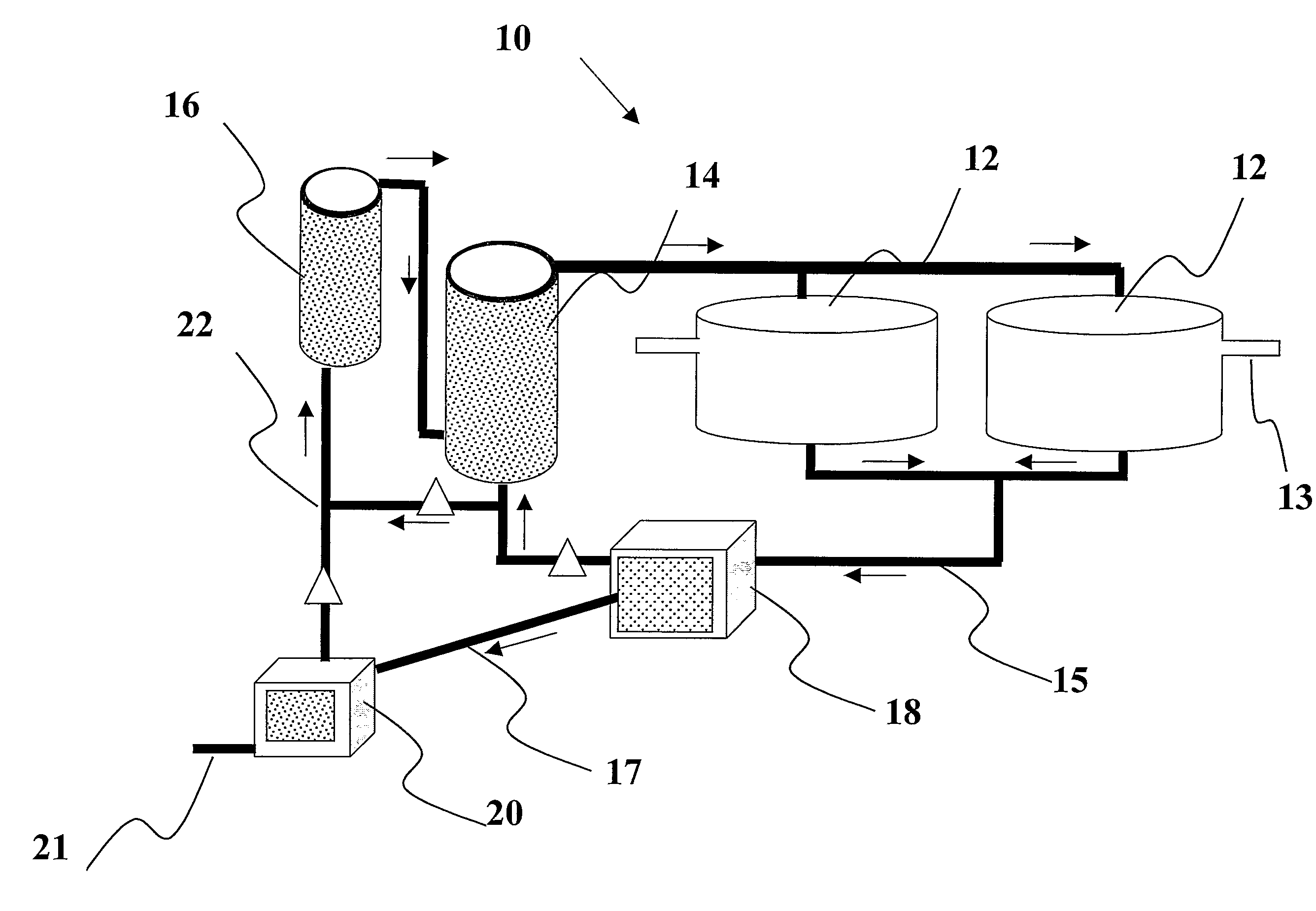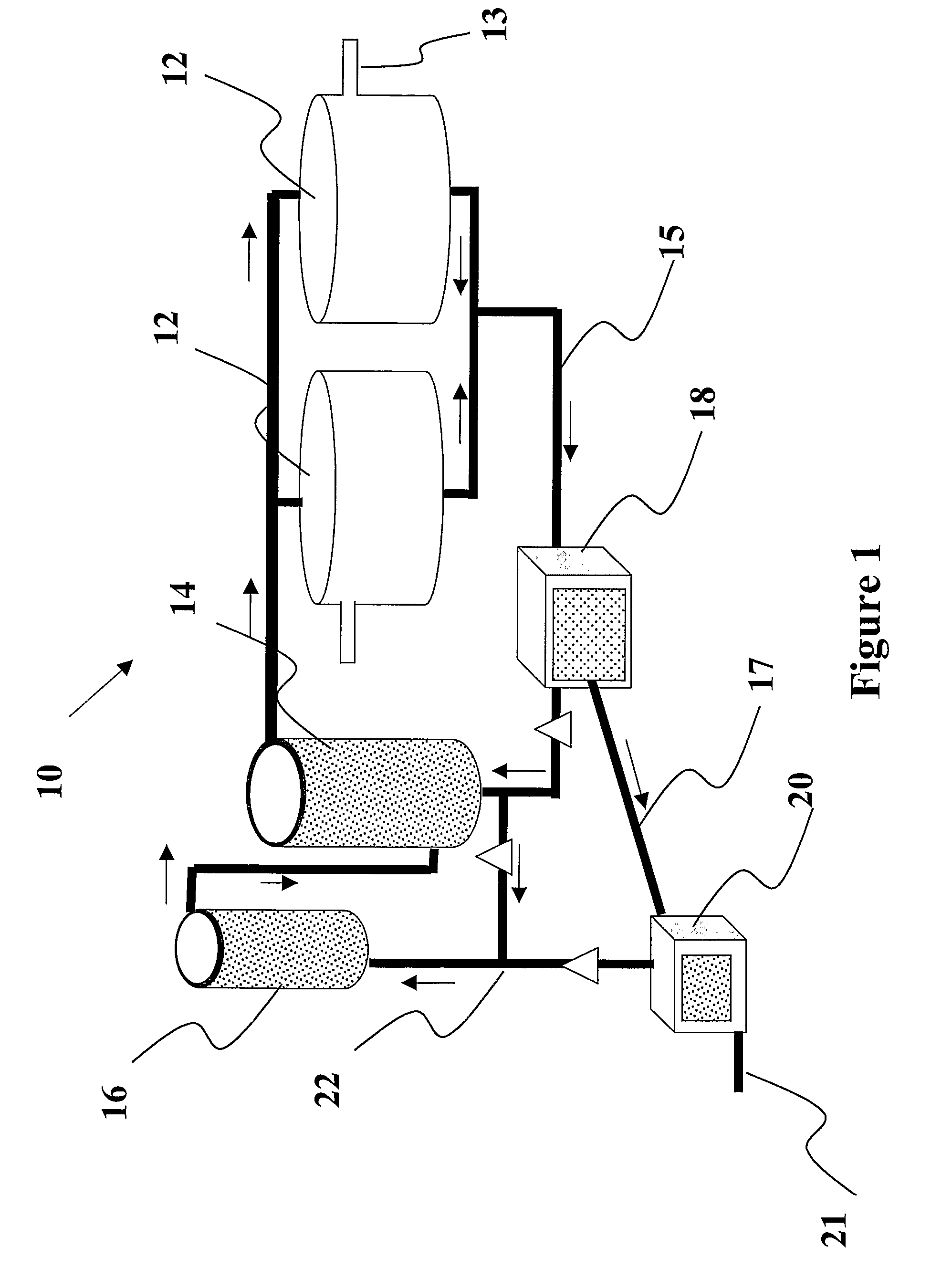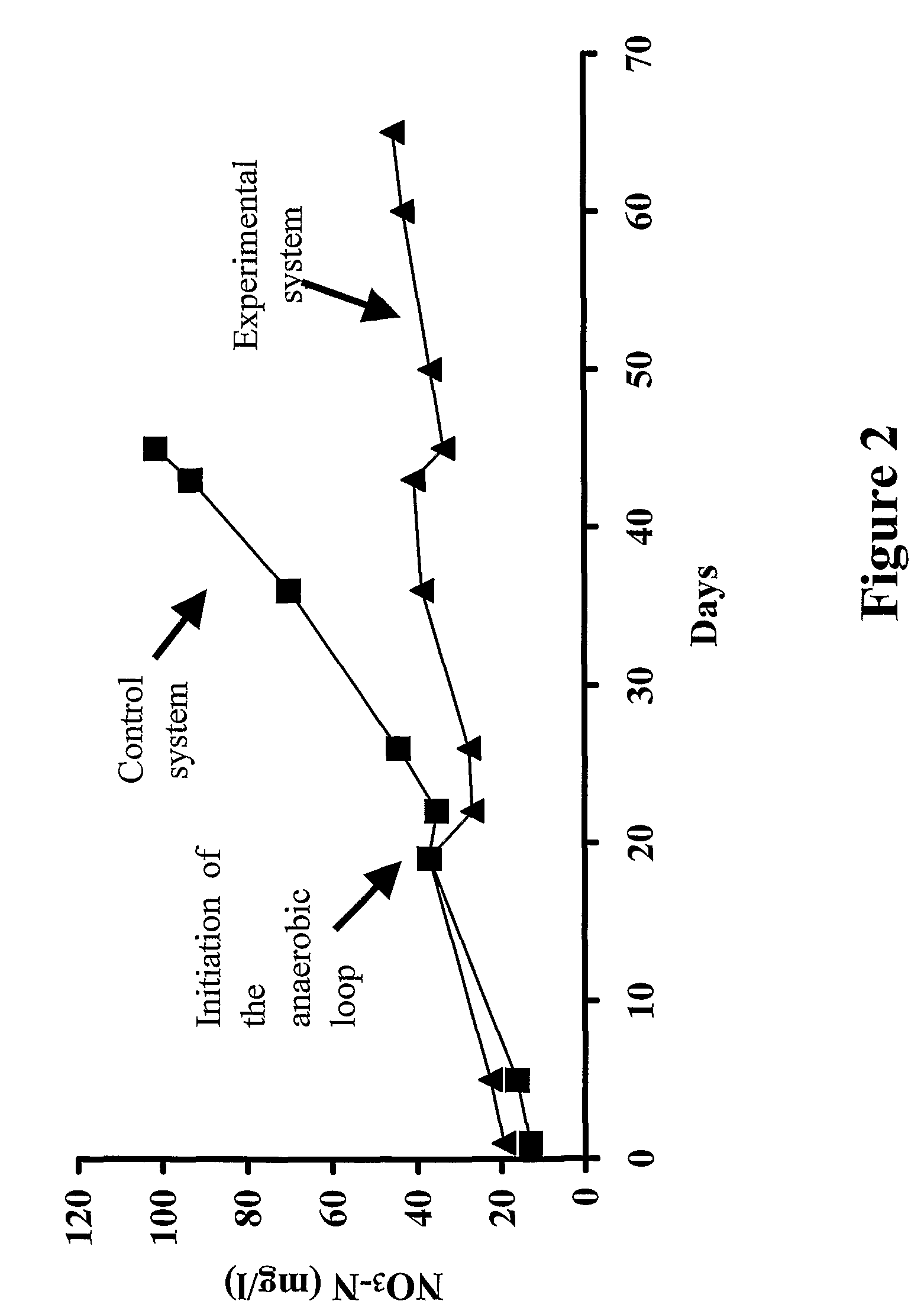Dissimilatory sulfate reduction as a process to promote denitrification in marine recirculating aquaculture systems
a technology of dissimilatory sulfate and denitrification, which is applied in the direction of membrane technology, biological water/sewage treatment, water treatment parameter control, etc., can solve the problems of heavy additional cost, hydrogen sulfide, and buildup of toxic ammonia and noxious gases, so as to promote dissimilatory sulfate reduction and denitrification. , the effect of promoting denitrification and reducing water exchang
- Summary
- Abstract
- Description
- Claims
- Application Information
AI Technical Summary
Benefits of technology
Problems solved by technology
Method used
Image
Examples
examples
Materials and Methods
System Configuration.
[0080]Two 4.2 m3 tanks were operated with gilthead seabream, Sparus aurata, fingerlings at a density of 5-10 kg / m3 and a feeding rate of 2%-2.5% body weight / day. The tanks were connected to a 2 m3 nitrifying moving bed bioreactor (MBB) and a flow rate of 8 m3 / hr was set to enable two exchanges of tank water per hour through the filter. Attached to this tank as a side loop was a 0.3 m3 cylindrical up-flow fixed bed biofilter filled with 0.2 m3 of polyethylene beads for denitrification. This anaerobic biofilter component was set with a low flow rate of 0.1 m3 / hr. Sludge collection was carried out through a drum screen filter with backwash system that used tank water. Sludge and backwash water were collected in a 0.3 m3 rectangular tank with 0.1 m3 beads that provided a means for solids removal as well as substrate for bacterial colonization. Water from the sludge tank was pumped back into the system via the anaerobic biofilter and high-density...
PUM
| Property | Measurement | Unit |
|---|---|---|
| flow rate | aaaaa | aaaaa |
| temperature | aaaaa | aaaaa |
| temperature | aaaaa | aaaaa |
Abstract
Description
Claims
Application Information
 Login to View More
Login to View More - R&D
- Intellectual Property
- Life Sciences
- Materials
- Tech Scout
- Unparalleled Data Quality
- Higher Quality Content
- 60% Fewer Hallucinations
Browse by: Latest US Patents, China's latest patents, Technical Efficacy Thesaurus, Application Domain, Technology Topic, Popular Technical Reports.
© 2025 PatSnap. All rights reserved.Legal|Privacy policy|Modern Slavery Act Transparency Statement|Sitemap|About US| Contact US: help@patsnap.com



